The Department has a wide range of state-of-the-art chemistry and physics instrumentation and equipment. All of our instruments are intended for undergraduate student use, in courses as well as individualized research projects. Students are trained in the hands-on use of these instruments by faculty who are experts in their fields.
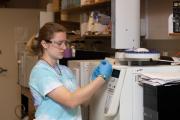
Thermo Finnigan iTQ-1100 GC-MS. This spectrometer is capable of electron impact (EI) and chemical ionization (CI) modes as well as tandem mass spectrometry (MSn). It is equipped with a 115 position autosampler for large sample loads, and direct probes are also available for semivolatile analysis.
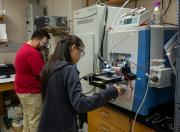
Thermo Q-Exactive Focus Mass Spectrometer. This spectrometer has high resolution (70,000) and is capable of electrospray (ESI) and atmospheric pressure chemical ionization (APCI) modes and can do tandem mass spectrometry (MS2). It can be used for structure elucidation of small molecules and sequencing of peptides and proteins. The LC front end is a Waters Acquity H-Class UHPLC.
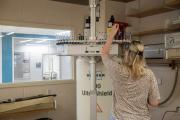
Nanlaysis Benchtop NMR. Purchased in 2024, this 60 MHz NMR is housed in our organic teaching lab.
Anasazi EFT-60 MHz NMR. This is an Anasazi upgraded Varian permanent magnet NMR. The magnet is a 1.4 Tesla permanent magnet and operates at a nominal proton frequency of 60 MHz.
Bruker Avance II 400 MHz NMR. The spectrometer is made available by internet-based access to the campuses of ISU, St. Mary-of-the-Woods College, and Rose-Hulman Institute of Technology.
Thermo-Nicolet iS10 Fourier Transform Infrared (FT-IR) spectrometer. This is a research-grade spectrometer with 0.5 cm-1 resolution, and switchable standard transmission and Attenuated Total Reflectance (ATR) accessories. The ATR accessory is particularly convenient for analysis of both liquid and solid samples. The transmission accessory handles all standard sample holders for solid, liquid, and gas samples. The spectrometer is capable of interfacing with IR microscopes, thermal analysis (TGA/DSC) and gas chromatographs with appropriate accessory upgrades.
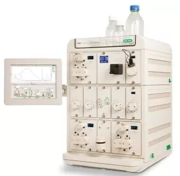
Bio-Rad NGC Discover Chromatography System

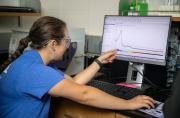
BMG Labtech VarioSTAR multimode plate reader. The plate reader has photodiode-based absorbance detection, linear variable filters for customizable fluorescence experiments, filter slots for fluorescence polarization, and a photomultiplier tube for sensitive fluorescence and luminescence detection. Equipped with temperature control and two reagent injectors, the multimode reader is used for a wide range of assays in course-based labs and research.
Shimadzu UV 2600 Ultraviolet-Visible spectrophotometer. Double beam optics, Czerny-Turner mount monochromator, wavelength range 220 nm to 1400 nm, 0.05 nm wavelength repeatability.

Thermo Dionex IC ICS-1100.
Agilent AA-240 Flame atomic absorption spectrometer.
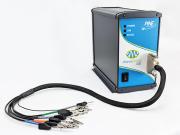
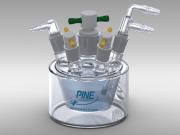
Pine Research Instrumentation WD200-MSR-RRDE. This WaveDriver® series bipotentiostat/galvanostat is a versatile dual-electrode electrochemical workstation. As a true integrated bipotentiostat, it is capable of performing Electrochemical Impedance Spectroscopy (EIS), as well as controlling one or two working electrodes operating in the same electrochemical cell along with a counter and reference electrode, making this instrument ideal for Rotating Ring-Disk Electrode (RRDE) voltammetry.
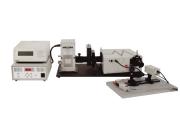
Newport Quantum Efficiency/IPCE Measurement Kit QE-PV-SI. The QE-PV-SI is a solution for measuring Quantum Efficiency (QE), also known as Incident Photon to Charge Carrier Efficiency (IPCE). With this kit, it is simple and convenient to measure a solar cell, detector or other photon-to-charge converting device. This system includes an ozone-free Xenon light source, optical chopper, lock-in amplifier, monochromator, order sorting filters, reference detector, related electronics and Oriel’s TracQ™ Basic software.
Johnson Matthey Magnetic Susceptibility Balance.
Perkin Elmer 341.
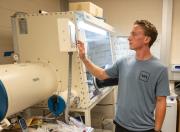
MBraun UniLab Glove Box with recycling purifier, with large and small antechambers (airlocks). The glove box is devoted to inorganic synthesis and set up for use with Ar(g), with oxygen and moisture sensors.
Indiana State University provides a research-computing cluster for faculty and staff engaged in research activities. Students may access the cluster with faculty sponsorship.